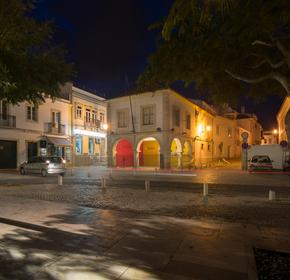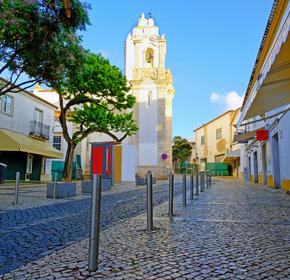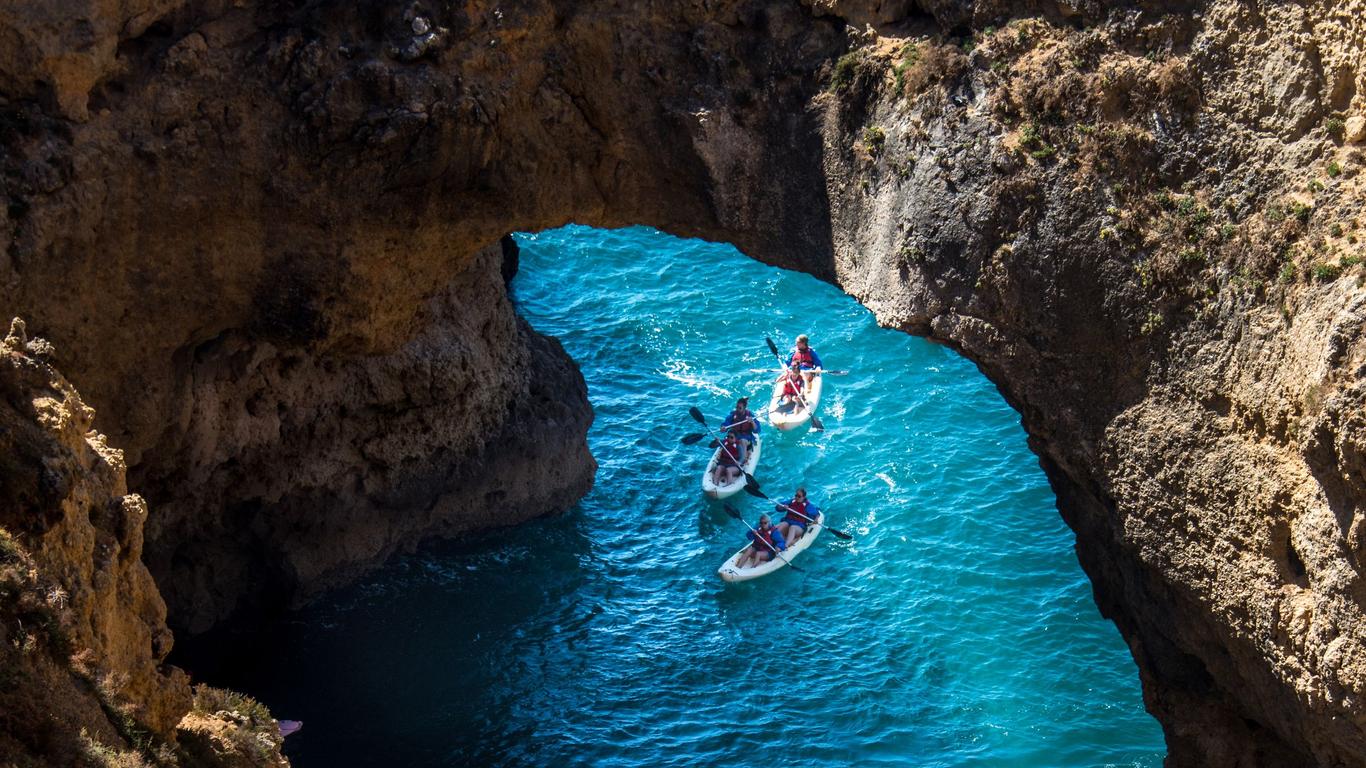
Lagos travel guide
Lagos Tourism | Lagos Guide
You're Going to Love Lagos
The western hub of Portugal's Algarve region, Lagos is a tourist's dream. Its medieval walls, beautiful beaches, excellent eateries, and amazing range of activities to enjoy makes this compact coastal gem a superb vacation destination.

Top 5 Reasons to Visit Lagos
1. The Beaches
If you love beaches, you'll love Lagos. Period. Meia Praia stretches for miles, Camilo Beach is small and lovely, while Porto de Mós is soft, sandy, and more secluded.
2. A Wealth of Activities
Being bored in Lagos is pretty tough. You can play golf, tennis, or soccer, strap on water skis, pilot a jet ski, race karts, or snorkel until the sun goes down.
3. A Beautiful Historic Heart
The city of Lagos is enclosed by 16th-century walls, while the church of Santo António doubles up as the city museum and you can clamber over the ramparts of the Forte da Ponta da Bandeira as well.
4. Coastal Hikes with Superb Views
The coast around Lagos has some astonishing sights, including the famous "Ponta da Piedade" cliffs, that shine like gold.
5. Nightlife, Food, and General Good Times
Aside from the attractions, Lagos is simply a fun place to be. It's laid-back and classy, hosting the Lagos Music Festival in July and offering fine dining all year-round.
What to do in Lagos
1. Meia Praia: The Big One
Dotted with parasoled picnic tables; wide, grassed sand banks; and surfers aplenty, the Meia Praia beach is the largest in Lagos, stretching from the west to the Odiáxere River mouth in the east. Given the expanse and course of water activities, spending more than one day at the beach is the way to go. Check out the small, informal beach cafes, work on your tan, go wind surfing, kite surfing or even jet skiing. When you're done with your water activities for the day, hit up any of the bars and restaurants along the beach in the evening.
2. Dona Ana Beach: A Walk to Remember
The steep, jagged strata cliffs that hug the coastline are not the only remarkable things about this beach in Lagos. The caverns and small pools these cliffs crate make for great areas to explore and its calm waters are easy to walk in. Little tidal pools full of sea life form around the high tide, so children will truly enjoy their time here. Although the clubs are on top of the steep and imposing cliffs, there are also plenty of great restaurants alongside them that boast both coastal views and sea breeze through your hair.
3. Fort da Ponta da Bandeira: History... and Amazing Views!
Everything in Lagos seems washed out, eroded and weathered by time and burnished into a glow by the sun. The same is true of Forte da Ponta da Bandeira, a maritime fort that was part of Lagos's defense system in the late 1600s. Inside, there is a small preserved chapel. This is the spot to visit if outstanding views of the beaches and marinas are what you crave. Come at sunset for some calm and quiet.
4. Porto de Mos Beach: Fun and Water Sports for Everyone
After Meia Praia, Praia do Porto de Mos is the 2nd largest beach in Lagos. The backdrop of limestone cliffs is the perfect companion to those long walks on the beach, where a wind frenzy can certainly kick your hair -- and the waves -- up. Those who see the beach as more than a sun-bathing opportunity will enjoy the plethora of choices such as stand-up paddle-boarding, pedal boating and snorkeling. Once you've had your fill of fun, relax and unwind at one of the two local restaurants. Praia do Porto de Mos feels much more secluded than Meia Praia and its low tide reveals plenty of sea creatures that come ashore.
5. Mercado de Escravos: A Somber but Important History
Literally translated, this is the "Slave Market", a museum dedicated to Portugal's historic trade. It's housed in the same district as other attractions such as the Igreja de Santa Maria, the Igreja de Santo António, the Museu Municipal and the Castelo dos Governadores. True to its name, the museum charts the coming of the first slaves who were of African heritage in the 15th century, as well as their treatment. The lives of the slaves are carefully traced as they were assimilated into the Portuguese population.
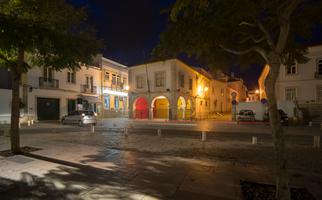
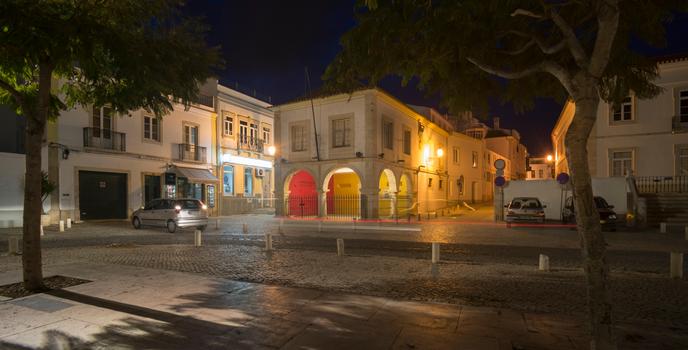
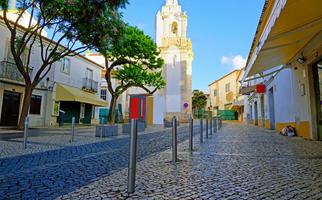
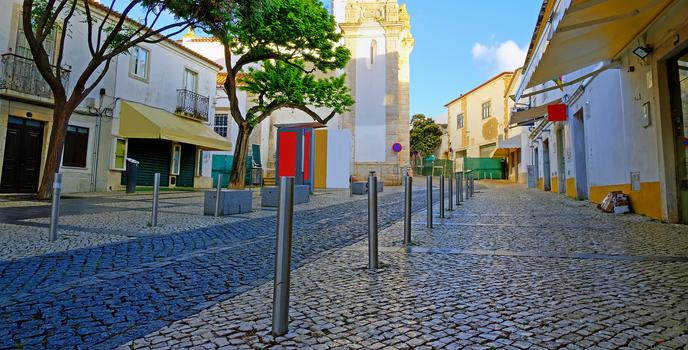
1. Meia Praia: The Big One
Dotted with parasoled picnic tables; wide, grassed sand banks; and surfers aplenty, the Meia Praia beach is the largest in Lagos, stretching from the west to the Odiáxere River mouth in the east. Given the expanse and course of water activities, spending more than one day at the beach is the way to go. Check out the small, informal beach cafes, work on your tan, go wind surfing, kite surfing or even jet skiing. When you're done with your water activities for the day, hit up any of the bars and restaurants along the beach in the evening.
2. Dona Ana Beach: A Walk to Remember
The steep, jagged strata cliffs that hug the coastline are not the only remarkable things about this beach in Lagos. The caverns and small pools these cliffs crate make for great areas to explore and its calm waters are easy to walk in. Little tidal pools full of sea life form around the high tide, so children will truly enjoy their time here. Although the clubs are on top of the steep and imposing cliffs, there are also plenty of great restaurants alongside them that boast both coastal views and sea breeze through your hair.
3. Fort da Ponta da Bandeira: History... and Amazing Views!
Everything in Lagos seems washed out, eroded and weathered by time and burnished into a glow by the sun. The same is true of Forte da Ponta da Bandeira, a maritime fort that was part of Lagos's defense system in the late 1600s. Inside, there is a small preserved chapel. This is the spot to visit if outstanding views of the beaches and marinas are what you crave. Come at sunset for some calm and quiet.
4. Porto de Mos Beach: Fun and Water Sports for Everyone
After Meia Praia, Praia do Porto de Mos is the 2nd largest beach in Lagos. The backdrop of limestone cliffs is the perfect companion to those long walks on the beach, where a wind frenzy can certainly kick your hair -- and the waves -- up. Those who see the beach as more than a sun-bathing opportunity will enjoy the plethora of choices such as stand-up paddle-boarding, pedal boating and snorkeling. Once you've had your fill of fun, relax and unwind at one of the two local restaurants. Praia do Porto de Mos feels much more secluded than Meia Praia and its low tide reveals plenty of sea creatures that come ashore.
5. Mercado de Escravos: A Somber but Important History
Literally translated, this is the "Slave Market", a museum dedicated to Portugal's historic trade. It's housed in the same district as other attractions such as the Igreja de Santa Maria, the Igreja de Santo António, the Museu Municipal and the Castelo dos Governadores. True to its name, the museum charts the coming of the first slaves who were of African heritage in the 15th century, as well as their treatment. The lives of the slaves are carefully traced as they were assimilated into the Portuguese population.




Where to Eat in Lagos
If you want to dine on bacalao (salt cod) and potato croquettes in true Portuguese style, check out Adega da Marina or O Camilo (two seafood specialists). Meals should cost around EUR10 for mains at most places.
When to visit Lagos
The Algarve is far enough south to offer warm weather (over 70 degrees) from March through to November. Summer is the peak season, so head to Lagos in May or June for slightly emptier beaches and accommodation bargains.
How to Get to Lagos
Plane
Faro Airport (FAO) is the major arrival point for visitors to Lagos. The bus from Faro costs EUR5.35 and takes around two hours. Taxis will cost around EUR60-80.
Train
Lagos is connected to Lisbon by train, but you'll need to alight at Tunes, then take the regional Algarve train from there to Lagos.
Car
From Lisbon, take the A2, then the E1 southbound. From Faro Airport, take the A22 straight to Lagos.
Bus
Bus services from Faro, Portimao, and Lisbon are provided by EVA and Rede Expressos and stop by the sea in the center of town.
Airports near Lagos
Airlines serving Lagos
Where to stay in Lagos
Old Town - Celtic, Roman, Moorish, and Portuguese influences collide in Lagos' old town, a spellbinding place to shop or dine.
Popular Neighborhoods in Lagos
Ameijeira - up the hill from the Old Town, Ameijeira is a calmer, sedate place to stay, with some fine beaches at the eastern end.
Porto de Mos - offering a stunning sandy beach, Porto de Mos faces the Atlantic, making it ideal for surfers and bodyboarders.
Where to stay in popular areas of Lagos
Most booked hotels in Lagos
How to Get Around Lagos
Public Transportation
A ONDA runs regional bus services along the Algarve coast. Single tickets cost between EUR1.20 and EUR1.60, depending on how far you need to travel.
Taxi
Taxis in Lagos will cost you around EUR3.50 for the meter drop, then about EUR1.50 per mile after that.
Car
You can rent cars from Faro Airport or in Lagos itself from Europcar, Avis, or Luzcar. Expect to pay around EUR20 per day.
The Cost of Living in Lagos
Shopping Streets
Don't miss the ceramics stores in Lagos - it's a local specialty. The Rua 25 de Abril is a great place to hunt for distinctive pottery gifts.
Groceries and Other
Supermarkets include Pingo Doce and Intermarché. As an indicator, expect 12 eggs to cost around EUR1.60.
